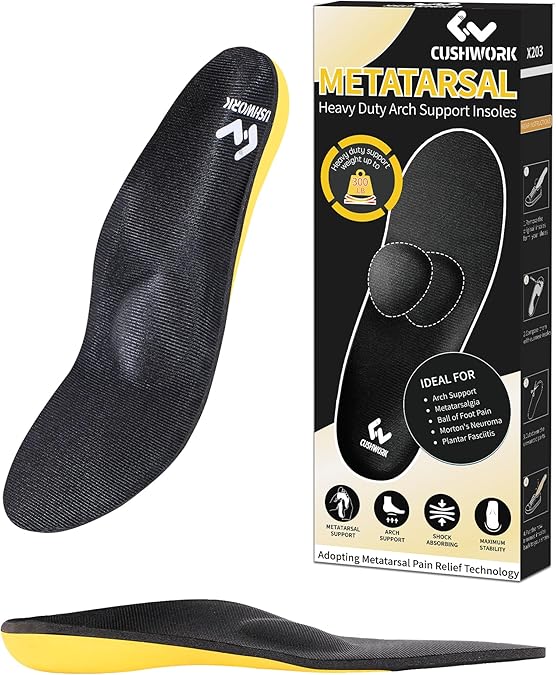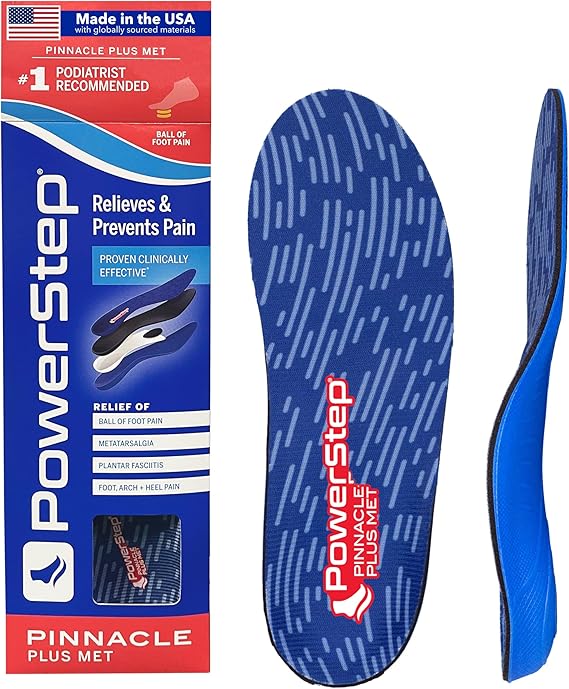Shoes For Morton’S Neuroma Women: Top Picks for Pain Relief
Living with Morton’s Neuroma can be an incredibly painful experience, often feeling like you’re walking on a persistent pebble or experiencing a burning sensation in the ball of your foot. This condition, caused by the thickening of tissue around a nerve leading to your toes, demands proper footwear to alleviate pressure and provide comfort. Finding the right **shoes for Morton’s Neuroma women** isn’t just about fashion; it’s about reclaiming your mobility and improving your quality of life. The right footwear, or specialized insoles designed to complement your existing shoes, can make a significant difference in managing symptoms and preventing further irritation.
Navigating the vast market of orthopedic footwear and supportive insoles can be overwhelming. Many shoes claim to offer comfort, but only specific features truly address the unique challenges posed by Morton’s Neuroma. Key elements to look for include a wide toe box, adequate arch support, and crucially, a metatarsal pad or dome that helps spread the metatarsal bones, thereby reducing pressure on the affected nerve. Without these features, even seemingly comfortable shoes can exacerbate your pain.
This comprehensive guide aims to simplify your search. We’ve meticulously reviewed five leading products – a mix of highly-rated insoles and a dedicated shoe – that are specifically designed to provide relief and support for women dealing with Morton’s Neuroma. Whether you’re looking to upgrade your current footwear with a powerful insert or invest in a new pair of supportive sneakers, our detailed analysis will help you make an informed decision and step towards a more comfortable, pain-free life.
| Product Name | Key Features | Rating | Buy Now |
|---|---|---|---|
| Cushwork Metatarsalgia Insoles | Metatarsal Pad, Arch Support, Shock Absorption | 4.4/5 | Buy Now |
| Welnove Metatarsal Insoles | Gel Metatarsal Pad, Forefoot Cushioning, Slim Design | 4.3/5 | Buy Now |
| PowerStep Pinnacle Plus Met Insoles | Metatarsal Pad, Firm Arch Support, Dual-Layer Cushioning | 4.5/5 | Buy Now |
| Orthostride Metatarsalgia & Metatarsal Insoles | Deep Heel Cup, Metatarsal Dome, Forefoot Support | 4.2/5 | Buy Now |
| STQ Women’s Orthopedic Sneakers | Wide Toe Box, Arch Support, Lightweight, Breathable | 4.6/5 | Buy Now |
Contents
- 1 Product Reviews
- 2 1. Cushwork Metatarsalgia Insoles
- 3 2. Welnove Metatarsal Insoles
- 4 3. PowerStep Pinnacle Plus Met Insoles
- 5 4. Orthostride Metatarsalgia & Metatarsal Insoles
- 6 5. STQ Women’s Orthopedic Sneakers
- 7 Buying Guide: Choosing the Right Shoes and Insoles for Morton’s Neuroma
- 8 FAQ About Morton’s Neuroma Footwear
- 8.1 Q1: Can I still wear fashionable shoes with Morton’s Neuroma?
- 8.2 Q2: How do metatarsal pads help with Morton’s Neuroma?
- 8.3 Q3: Should I get custom orthotics or off-the-shelf insoles?
- 8.4 Q4: How long does it take to get used to new insoles or orthopedic shoes?
- 8.5 Q5: Are these insoles suitable for all types of shoes?
- 9 Conclusion
Product Reviews
Buying Guide: Choosing the Right Shoes and Insoles for Morton’s Neuroma
Selecting the perfect footwear or insoles when you have Morton’s Neuroma is paramount for comfort and pain management. It’s not just about finding a shoe that feels good initially, but one that actively supports your foot and prevents nerve compression over time. Here’s what to look for:
1. Metatarsal Support
This is the most critical feature. A metatarsal pad or dome, whether integrated into a shoe or an insole, helps to lift and spread the metatarsal bones slightly. This action takes pressure off the irritated nerve, which is the hallmark of Morton’s Neuroma. Ensure the pad is positioned correctly – typically just behind the ball of your foot, not directly under it.
2. Wide Toe Box
Avoid shoes that squeeze your toes together. A wide, roomy toe box allows your toes to splay naturally, preventing compression of the forefoot and the nerve. Pointed shoes, high heels, and narrow-fitting shoes are definite no-gos. Look for shoes described as “wide fit” or those with a naturally broad forefoot design.
3. Arch Support
Proper arch support helps maintain the natural alignment of your foot, distributing pressure more evenly and preventing excessive pronation (rolling inward) or supination (rolling outward). This indirectly reduces stress on the forefoot and can improve overall foot mechanics.
4. Cushioning and Shock Absorption
Good cushioning in the midsole and outsole can absorb impact, reducing the jarring forces that travel up to your forefoot. Look for materials like EVA foam or gel inserts that provide a balance of softness and responsiveness without being overly squishy, which can sometimes lead to instability.
5. Low Heel Drop
High heels shift your body weight forward onto the ball of your foot, drastically increasing pressure on the metatarsals and the neuroma. Opt for shoes with a minimal heel drop or, ideally, a zero-drop design. Flats or shoes with a very slight heel are preferable.
6. Removable Insoles
If you’re buying new shoes, check if their existing insoles are removable. This allows you to easily replace them with specialized orthopedic insoles, like those reviewed above, ensuring you get the exact level of support and metatarsal padding you need.
By keeping these factors in mind, you can confidently choose **shoes for Morton’s Neuroma women** that offer maximum comfort and contribute significantly to managing your pain.
FAQ About Morton’s Neuroma Footwear
Q1: Can I still wear fashionable shoes with Morton’s Neuroma?
A1: While very high heels or narrow, pointed-toe shoes should be avoided, many brands now offer stylish options with orthopedic features like wider toe boxes and good arch support. Look for sneakers, comfortable flats, or low-heeled boots. Insoles can also make some fashionable shoes more tolerable for short periods.
Q2: How do metatarsal pads help with Morton’s Neuroma?
A2: Metatarsal pads are strategically placed behind the ball of the foot to lift and spread the metatarsal bones. This action creates more space for the nerve, reducing compression and irritation, which in turn alleviates pain and discomfort.
Q3: Should I get custom orthotics or off-the-shelf insoles?
A3: Off-the-shelf insoles, especially those designed for metatarsalgia with a metatarsal pad, can provide significant relief for many. If your pain persists or is severe, consulting a podiatrist for custom orthotics might be beneficial as they are tailored precisely to your foot’s unique needs.
Q4: How long does it take to get used to new insoles or orthopedic shoes?
A4: There can be a break-in period, typically a few days to a couple of weeks, as your feet adjust to the new support and alignment. Start by wearing them for a few hours a day and gradually increase the duration. If pain increases, consult a professional.
Q5: Are these insoles suitable for all types of shoes?
A5: Most full-length insoles require shoes with removable footbeds and enough internal volume. Slimmer insoles or half-insoles (like the Welnove) can fit into tighter shoes. Always check the shoe’s internal space before purchasing a new insole.
Conclusion
Finding effective relief from Morton’s Neuroma pain often starts with the right footwear and support. Our review of these top insoles and the STQ Women’s Orthopedic Sneakers highlights that solutions are available, whether you prefer to enhance your existing shoes or invest in a dedicated pair.
For the **Best Overall** relief and comprehensive support, the **PowerStep Pinnacle Plus Met Insoles** stand out. Their clinically-proven design, robust metatarsal pad, and firm arch support make them an excellent choice for consistent pain management.
If you’re looking for the **Best Budget** option to get started on your relief journey, the **Cushwork Metatarsalgia Insoles** offer fantastic value. They provide strong metatarsal and arch support at a more accessible price point, making them a great entry into specialized orthotics.
Finally, for those seeking a complete footwear solution that doesn’t compromise on style or comfort, the **STQ Women’s Orthopedic Sneakers** are the **Best Premium** choice. They offer a wide toe box and integrated support, providing immediate, all-day comfort without the need for separate inserts.
Remember, managing Morton’s Neuroma is a journey, and the right **shoes for Morton’s Neuroma women**, or the right insoles, are a crucial step towards walking comfortably again. Prioritize comfort, support, and the specific features that address nerve compression, and you’ll be well on your way to a less painful life.

I am an accomplished footwear blogger with a keen eye for style and a passion for shoes. My deep-rooted love affair with footwear began at a young age when I would spend hours perusing shoe stores, admiring the intricate designs and imagining the stories they could tell.




